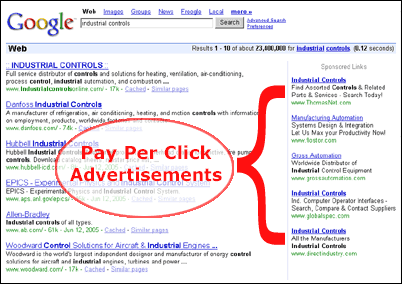Starting and managing a successful pay-per-click (PPC) campaign can be daunting.
Knowing that you are using your (or your client’s) money is enough to scare a lot of people away from PPC.
But here is the thing: Once you have the know-how, an excellent strategy, and a solid understanding of the basics, you can easily get started on Google AdWords without stressing yourself out.
But first, let’s learn more about PPC.
What’s With PPC?
Keep in mind that the most successful PPC campaigns are built with an informed foundation and comes with vital insights.
Perhaps, you can not wait to start with your PPC. Or maybe you are floundering and want to recover.
Even if you have already started, and is gaining profit from your efforts, these conditions are still crucial.
Know Your Budget
According to Voy Media, a top AdWords company, “Before you start inserting keywords in your campaign, ensure that you have the budget for it.”
Not using Google AdWords Keyword Planner might cause your campaign to fail. Why? Because you end up wasting your money with just a few clicks. That’s something you do not want to do when starting your first campaign.
Also, ask yourself this question, “Can I afford to advertise with this keyword?”
Usually, the cost per click varies on every industry. Moreover, there will be other elements that will cause the CPC to increase. So, it is crucial to know what you can afford.
Research on How Your Competitors are Doing

If you do not have an idea of how your competitors are doing, then be familiar with them. If you are not quite experienced yet, it is good that you gather knowledge from everywhere around you.
Chances are, there are lots of things that you can learn from their campaigns if you analyze them carefully. Various tools are available out there in the market (both paid and free) which will help you find those that are selling the same products and services. You can use tools like SemRush and SpyFu.
Moreover, a lot of people may not know this, but Adwords can also be used when conducting competitor research.
You have a lot of competitors more than you think. Your goal is to go beyond your direct competitors that sell the same products.
Optimize your Ad Copy

Remember that a single ad copy can make all the difference in the world. Since it entices users to click on your ad, uses as a result. When you have a higher quality score, you will have a lower quality score increase-per-click. Over time, this leads to a better return on investment.
Also, ensure that your copy is:
- Engaging and informative
- Has a specific call-to-action
- Have no misspellings whatsoever
- Is relevant
- Includes the keyword
- Uses an active voice
- Focuses on the value prepositions
Because paid ads have limited ad space, you should ensure that your copy should be persuasive enough.
Moreover, your ad structure should be divided into 3 segments:
- Compelling Headline
- Description lines
- Display URL
When you write as effectively as possible, then you are on your way to having a successful PPC campaign.
Proper Use of Relevant Call to Actions

When creating a call-to-action, focus on the action. Tell users what you want them to do.
Although the words “Get” and “Now” are extremely popular, ensure that the words that you choose in your CTA are relevant with your offer.
Here are other powerful CTAs that compels a user to click:
- Best (value-oriented)
- Free (cost-conscious)
- Save (cost-conscious)
- Shipping (cost-conscious)
- You (personalization)
- You’re (personalization)
Put your CTAs in action. What do you want them to perform after watching your ad?
Keyword Research: Remove Negative Keywords
The next thing that you need to do is to create a keywords list. These will trigger the ads that will show up in the SERPs. It is essential that you select the most relevant keywords so that you will not be wasting money on ads that do not perform well. Your ads should also be visible to a certain demographic, those people who are interested in what you have to sell.
In those terms, you can use the word, “negative.” That excludes the category of the audience, that has nothing to do with your items. This will help you save money in the long run and avoid fake clicks.
In-Market Audiences
What are In-Market Audiences? Well, they are an audience that is tailored specifically for advertisers that are focused on getting conversions from likely buyers. They can help drive your remarketing performance, and reach those who are close to making a purchase.
Today, in-market audiences are not only utilized as a targeting option for display campaigns. Surprisingly, for search campaigns, they are also bid modifiers.
Back in 2018, Google created a lot of new in-market segments. Then, gave this feature to several advertisers.
The best strategy to consider with in-market audiences is to enhance the bets for searches from those segments. That way, they will be more interested in the products and services that you offer.
Final Thoughts
At first glance, a PPC campaign might look simple. However, the truth is that it takes a lot of hard work. So, consider these tips especially if it is your first time venturing into paid advertising.
Also, remember that the end goal is to get as much traffic as you can, with very little cost per click. So, this should happen without hindering your brand’s visibility or your product ads in your chosen platform.







One Comment
Pingback:
January 11, 2021 at 9:06 am